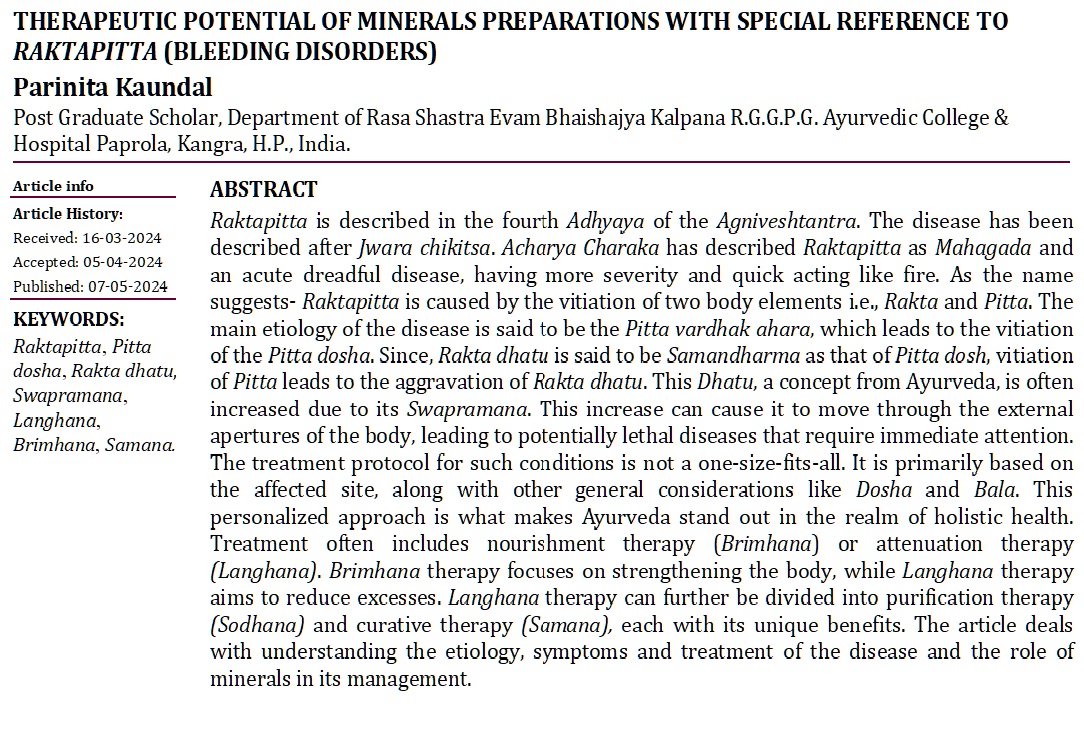Therapeutic Potential of Minerals Preparations wsr to Raktapitta (Bleeding Disorders)
DOI:
https://doi.org/10.47070/ayushdhara.v11i2.1520Keywords:
Raktapitta, Pitta dosha, Rakta dhatu, Swapramana, Langhana, Brimhana, SamanaAbstract
Raktapitta is described in the fourth Adhyaya of the Agniveshtantra. The disease has been described after Jwara chikitsa. Acharya Charaka has described Raktapitta as Mahagada and an acute dreadful disease, having more severity and quick acting like fire. As the name suggests- Raktapitta is caused by the vitiation of two body elements i.e., Rakta and Pitta. The main etiology of the disease is said to be the Pitta vardhak ahara, which leads to the vitiation of the Pitta dosha. Since, Rakta dhatu is said to be Samandharma as that of Pitta dosh, vitiation of Pitta leads to the aggravation of Rakta dhatu. This Dhatu, a concept from Ayurveda, is often increased due to its Swapramana. This increase can cause it to move through the external apertures of the body, leading to potentially lethal diseases that require immediate attention. The treatment protocol for such conditions is not a one-size-fits-all. It is primarily based on the affected site, along with other general considerations like Dosha and Bala. This personalized approach is what makes Ayurveda stand out in the realm of holistic health. Treatment often includes nourishment therapy (Brimhana) or attenuation therapy (Langhana). Brimhana therapy focuses on strengthening the body, while Langhana therapy aims to reduce excesses. Langhana therapy can further be divided into purification therapy (Sodhana) and curative therapy (Samana), each with its unique benefits. The article deals with understanding the etiology, symptoms and treatment of the disease and the role of minerals in its management.
Downloads

Downloads
Published
Issue
Section
License
Copyright (c) 2024 AYUSHDHARA

This work is licensed under a Creative Commons Attribution-NonCommercial-ShareAlike 4.0 International License.


